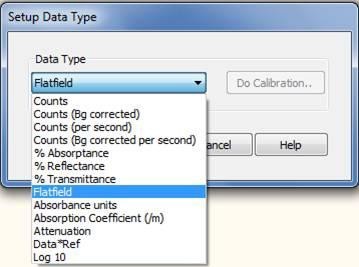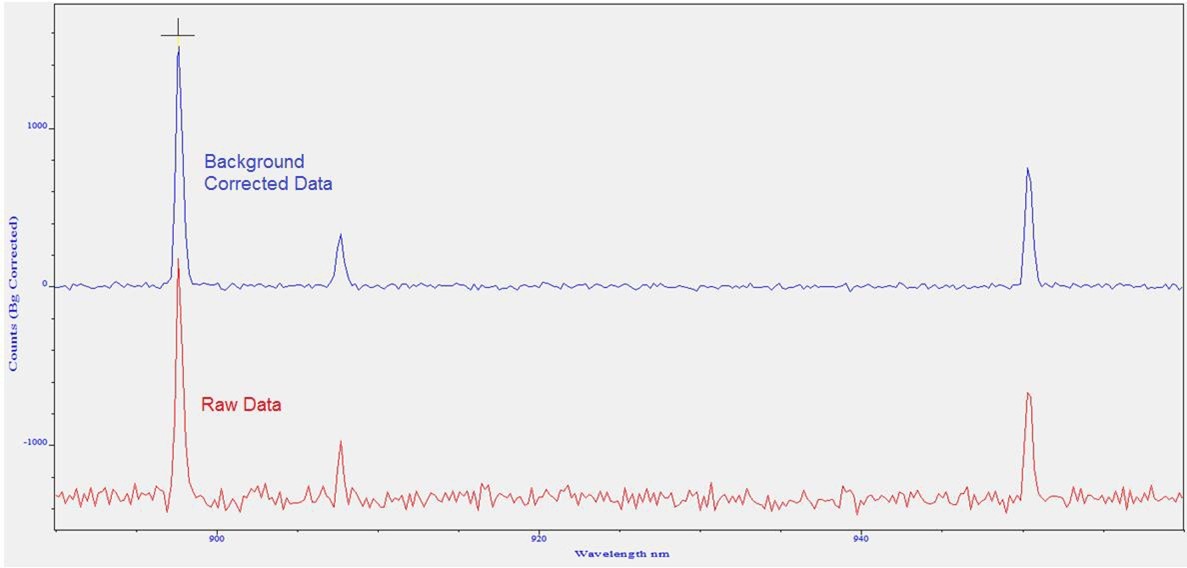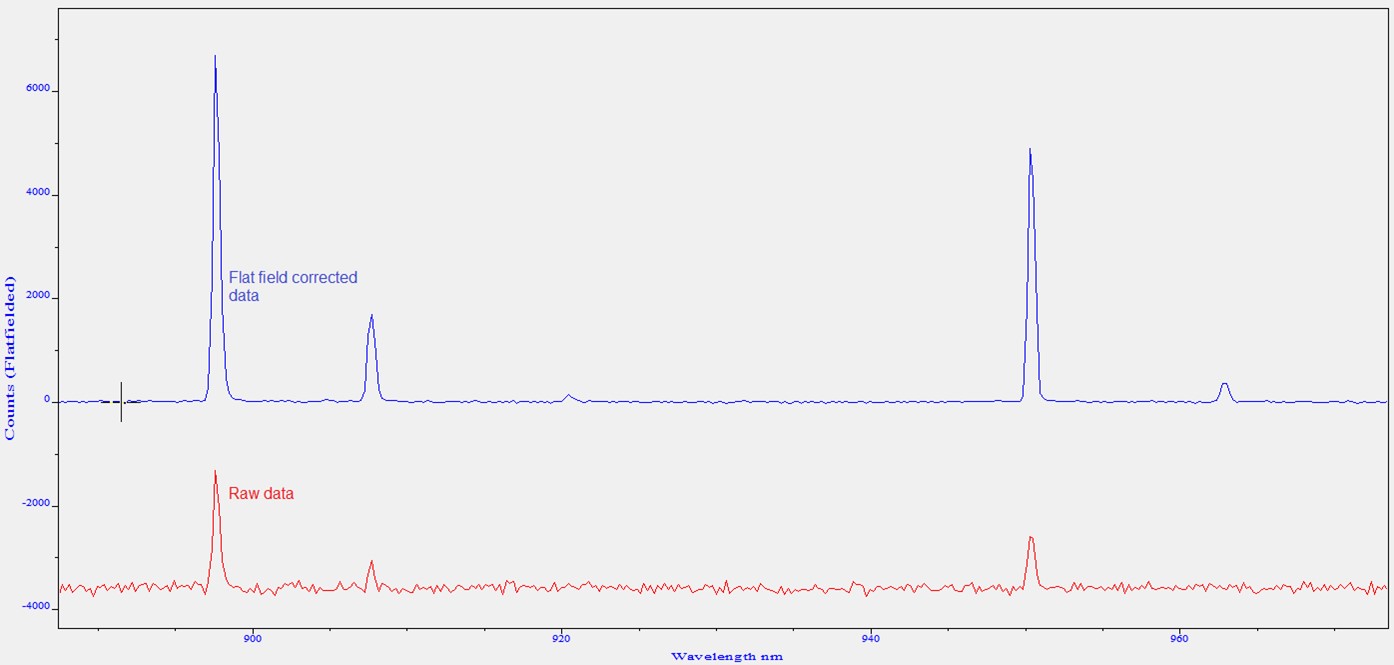Resources
 Part of the Oxford Instruments Group
Part of the Oxford Instruments Group
Expand
Collapse
 Part of the Oxford Instruments Group
Part of the Oxford Instruments Group
Due to the architecture of the InGaAs sensor, a very distinct variation in pixel value may become apparent or appear as a ‘noisy baseline’. For the DU492A, the pixels are 50 µm in width and the amplifiers can be located on the same side, however, the DU490A and DU491A, the pixels are only 25 µm and therefore the amplifiers must be placed alternatively above and below each pixel. This results in the baseline difference between pixels. As each pixel of the 1-D array sensor has its own amplifier output, each amplifier will have slightly different gains and dark current values resulting in a widely varied background. For this reason, raw data from the CCD ideally should not be used for calculations.
Background correction or flat fielding of InGaAs cameras is always recommended due to possible effects such as this, which are usually caused at electronic level during the manufacturing of the sensor. Background correction will help to mitigate the effect.
Background correction and flat fielding are options available as Data Types (Acquisition >> Setup Data Type)

Background correction (Counts (Bg Corrected)) subtracts a dark image (or background) from the signal. (see Figure 1 below)

Figure 1 - demonstrating difference in the baseline after background correcting data
Flat field correction is used to remove any pixel-to-pixel variations that are inherent in the InGaAs sensor. If Reference is the background corrected incident intensity, the Signal is divided by the Reference, therefore:
Flat field = M x Signal / Reference where M is the mean of the Reference

Figure 2 - demonstrates the difference between raw and flat field correct data
In the example above, the reference used has been acquired using a uniform light source evenly distributed across the sensor.
Date: April 2022
Author: Andor Support Team
Category: Technical Article
